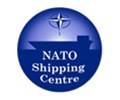THE
PRACTICAL VIEW OF GENERAL AVERAGE
By
Peter Maina (MICS), Shipping & Logistics Professional, Trainer: Mombasa,
Kenya: 04/05/2013.
The
law of general average is a legal principle of maritime law applied by
shipping lines and ship owners in solving maritime accidents which are deemed
to have been deliberate encountered with intention of saving the adventure from
incurring a total peril.
According
to law of general average, all parties in a sea adventure proportionally share
any losses resulting from a voluntary sacrifice of part of the ship or cargo incurred
deliberately to save the whole adventure in an event of emergency that was
likely to result to a total loss.
In
the event of a danger faced at sea, crew members often have precious little
time in which to determine precisely whose cargo they are jettisoning ie. to be
thrown overboard. Thus, to avoid quarrelling that could waste valuable time,
there arose the equitable practice whereby all the merchants whose cargo landed
safely would be called on to contribute a portion, based upon a share or percentage,
to the merchant or consignee whose goods had been thrown overboard to avoid
possible total loss.
For
example, a ship arriving at the port of Mombasa may face a risk of sinking
while approaching the port. If the shipmaster and the crews realize the ship is
about to sink due to much weight, they may decide to throw some containers
overboard to save the ship from sinking. If they fail to do so, it means the
whole ship would sink and all the goods will be lost including the ship, the
containers and any other machinery onboard. Thus some cargo will be thrown
overboard and the ship becomes safe. In this case, then it is only good for
those who benefited to share the loss with those whose cargo was sacrificed to
save the adventure. This is what brings about the concept of general average.
General
average traces its origins in ancient maritime law but it remains part of the
admiralty law of most countries.
It
is effect as per the York Antwerp rules
Usually
on arriving at a port of discharge the shipmaster appears before a magistrate
or notary public declaring that during the course of the voyage, there occurred
an event which led to an extra ordinary sacrifice being made to save the voyage
from a total loss.
Extracts
from ship logbook are used as evidence. The ship logbook is a booklet
containing a record of all events and occurrences on board the ship throughout
the voyage and port stays.
For
general average to be declared, the following conditions must be clear:
1. There
must be a common danger / or risk
2. The
risk must be real
3. It
must be endangering the risk of all cargoes and not one individual
4. The
loss must have been incurred in effort to save adventure from a total loss
5. The
effort must have been successful
When
general average occurs, the losses are shared proportionately by all interested
parties who include:
1. Owners
of cargoes – shippers
2. Charterers
3. Ship
owner
4. Owners
of leased in containers
5. Owners
of hired / leased cargo handling equipments on board at the times
The
losses are evaluated and calculated by Average adjusters who are specialists in
General average. General average adjusters are special ship / valuation
companies who specialize is evaluation the value of loss incurred, its
magnitude and also determine each party’s contribution.
Several
conditions and requirements are set by ship owners for his agent to follow
before release of cargo as adjusters proceed with evaluation process. It should
be noted that a port / shipping agent is relied upon by all parties to ensure
general average contributions are received before release of cargo.
To
obtain cargo, consignee through his clearing agent must fulfill or submit the /
part of the following documents:
-
General average claim form
-
General average valuation form.
-
Bank guarantee / Letter of indemnity
-
Cash deposit if required
The port agent is required to demonstrate his expertise while
administering general average by:
-
Professionally advising the consignee and their clearing agents
on what is general average, how its incurred and why the costs have to be
shared.
-
To keep the clearing agents and the consignees fully informed
about position of the ship, cargo and process of general average.
-
To keep all parties informed and to communicate with them on the
requirements, contributions and any other details arising.
-
To supervise his staff on the general average procedures so that
they can act effectively
The agent earns as a result of his expertise the following:
-
Special fees for executing general average on behalf of
interested parties
-
Communication fees / allowances
-
Overtimes for extra hours worked by him and his staff while
executing general average
GENERAL AVERAGE DISPUTES.
There have been so many disputes between interested parties on
certain circumstances whether they qualify as general average or not. Most
people argue that ship owners have attempted to protect themselves from certain
expenses by declaring certain events as general average. This has been a source
of many maritime legal battles and which continue to be addressed. This cases
include:
-
Cases of piracy and hijacking of the ship
-
Deviation of the ship to proceed for repairs
-
Collision of the ship
Question on whether above and others not listed qualify as
general average has been at discretion of the courts of law. Many people
however argue that most lawyers and judges lack understanding on maritime
issues and hence amicable judgments are not arrived at.
I trust for find the write resourceful and helpful to your
career and exams. I also trust you can judge circumstance to qualify if they
are general average or not.


